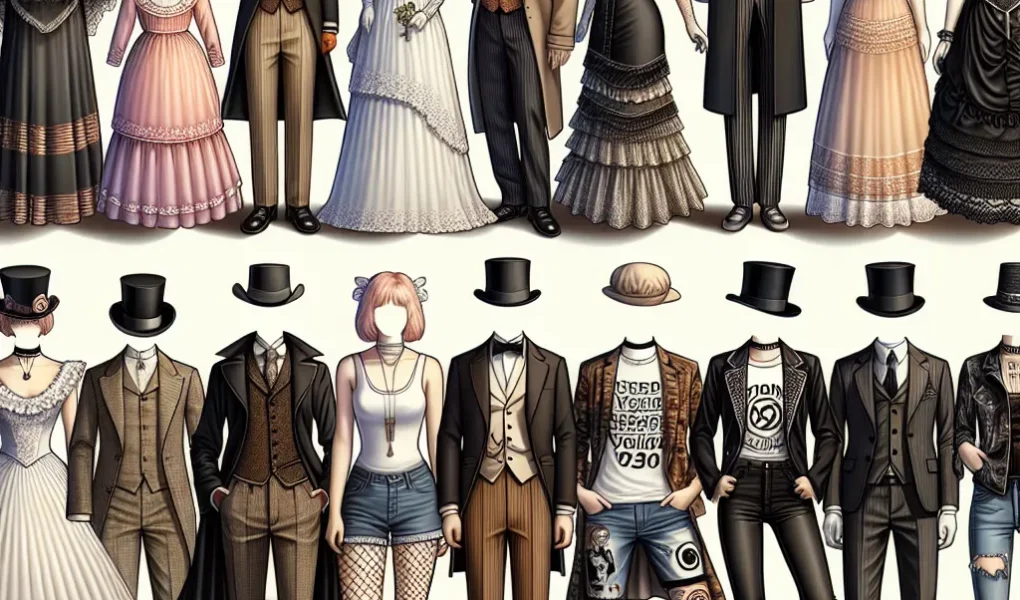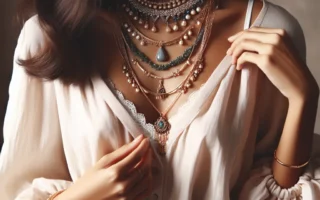The History of Fashion: Tracing the Roots of Classic Styles
The history of fashion is a rich tapestry that has woven the classic styles we admire today. Tracing the roots of classic fashion brings us back to ancient civilizations such as the Egyptians, Greeks, and Romans, where clothing was not only a form of expression but also a symbol of status and culture.
In ancient Egypt, for example, royalty and the elite adorned themselves with intricate jewelry, elaborate headdresses, and finely woven linen garments. The Greeks introduced the concept of draped clothing, using lightweight fabric to create graceful and flowing silhouettes. Meanwhile, the Romans embraced tailored garments and draped tunics, showcasing their affinity for luxury and sophistication.
As the centuries progressed, the Renaissance era brought forth opulent garments adorned with intricate embroidery and sumptuous fabrics, reflecting the flourishing art and culture of the time. This was followed by the structured and embellished styles of the Baroque and Rococo periods, characterized by ornate designs and elaborate details.
The classic styles of fashion continued to evolve through the Victorian era, witnessing the emergence of tailored suits and lavish gowns, symbolizing the rigid social hierarchy of the time. The 1920s marked a significant shift with the introduction of flapper dresses and androgynous styles, challenging the conventions of femininity and setting the stage for modern fashion.
Understanding the history of classic fashion allows us to appreciate the evolution of style, from the ancient world to the present day. The influence of these timeless styles can still be seen in contemporary fashion, demonstrating the enduring impact of classic aesthetics on the modern runway.
By delving into the origins of classic fashion, we gain a deeper understanding of its cultural significance and the timeless allure it continues to exude in the modern era.
Transforming Trends: The Shift from Traditional to Contemporary Fashion
One of the most fascinating aspects of the evolution of fashion is the transformation of trends from traditional to contemporary styles. Over the years, fashion has seen a significant shift from classic and conventional designs to innovative and modern concepts, reflecting the dynamic nature of the industry. Traditional fashion, characterized by timeless elegance and sophisticated craftsmanship, has gradually made way for contemporary fashion, which embraces creativity, individuality, and diversity.
The transition from traditional to modern fashion can be attributed to various factors, including changes in societal norms, technological advancements, and the influence of global pop culture. Traditional fashion, often associated with formal attire and cultural symbolism, has evolved into a more relaxed and eclectic style that caters to the diverse preferences of today’s consumers. This shift has resulted in the fusion of different cultural elements and the redefinition of fashion boundaries, giving rise to a plethora of innovative trends and designs.
Contemporary fashion not only celebrates inclusivity and self-expression but also challenges the conventional standards of beauty and style. The emergence of sustainable and ethical fashion practices further exemplifies the transformative nature of the industry, paving the way for a more conscious and responsible approach to clothing production and consumption. This evolution reflects a growing awareness of environmental and social issues, prompting fashion enthusiasts to seek out alternative and eco-friendly fashion choices.
In conclusion, the transformation of fashion trends from traditional to modern styles signifies the continuous evolution and adaptation of the industry to meet the changing needs and aspirations of consumers. As fashion continues to evolve, it is essential to appreciate the rich heritage of traditional fashion while embracing the dynamism and innovation of contemporary design.
Fashion Forward: Exploring the Evolution of Style
Fashion has gone through a remarkable evolution, transitioning from classic styles to modern trends that constantly push the boundaries of creativity and self-expression. The concept of being „fashion forward” has become increasingly significant in the ever-changing world of style. This term refers to the exploration and embrace of new and innovative ideas in the fashion industry, constantly seeking to break new ground and redefine traditional norms.
The evolution of fashion has been marked by the emergence of avant-garde designers who have challenged conventional norms and paved the way for unconventional and daring aesthetics. From the iconic styles of Coco Chanel and Christian Dior to the avant-garde designs of modern visionaries like Alexander McQueen and Rei Kawakubo, the evolution of fashion reflects a journey of bold experimentation and boundary-pushing creativity.
With the rise of technology and social media, the fashion industry has witnessed a democratization of style, allowing individuals to express their unique fashion sensibilities and participate in shaping the ever-evolving landscape of fashion. This has given rise to a culture of inclusivity and diversity, where fashion is no longer confined to the elite few, but is now a platform for self-expression for people from all walks of life.
As fashion continues to evolve, the concept of being fashion forward will remain a driving force, propelling the industry towards new and uncharted territories. The evolution of style will continue to be shaped by the intersection of culture, technology, and individual expression, creating an ever-changing tapestry of creativity and innovation.



